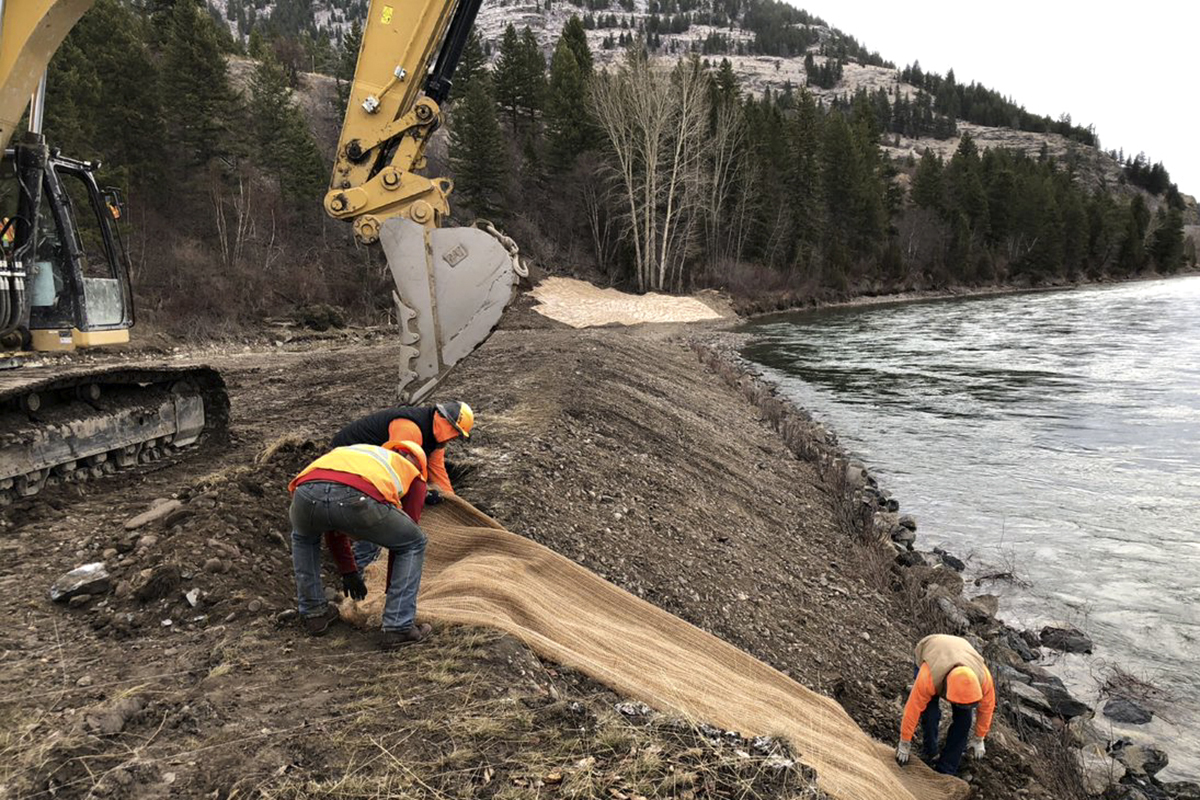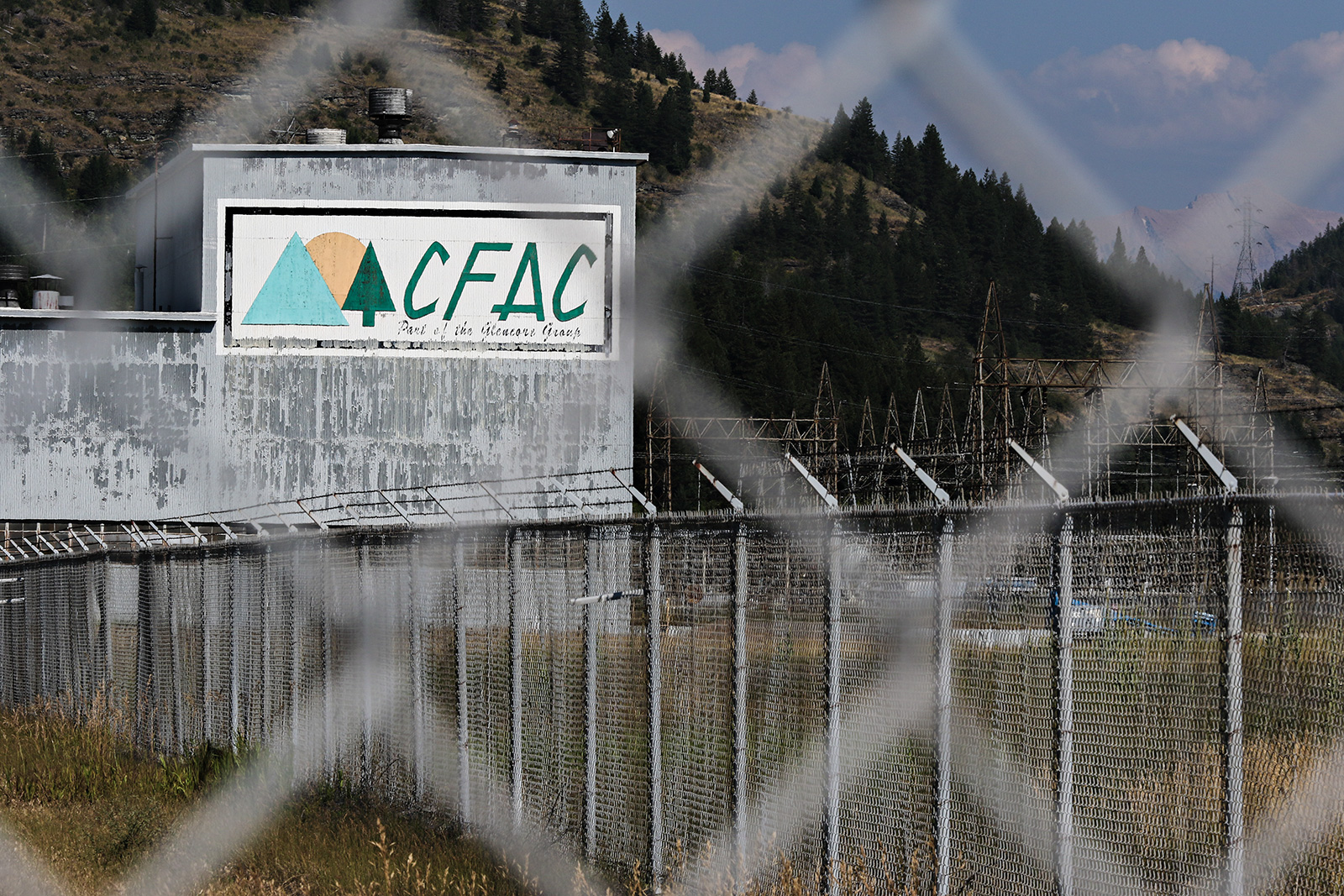Although it once stood out as an emblem of industry in Columbia Falls, helping shape the community’s blue-collar identity and fuel its economy, the shuttered aluminum plant along the Flathead River has since been a source of unresolved public health concerns, bitter legal disputes and environmental claims.
This summer, at least one of those claims moved one step closer toward resolution when a federal judge meted out financial responsibility to the industry giants responsible for decades of contamination at the property.
In a 158-page ruling in August, U.S. District Judge Donald Molloy ordered that Atlantic Richfield Co. (ARCO), a subsidiary of the oil and gas behemoth BP America, is responsible for 35% of the $12.3 million in recoverable costs that Columbia Falls Aluminum Co. (CFAC), a division of Glencore, the largest commodities trading group in the world, has incurred to date.
Under the ruling, which pegs ARCO’s share of the current cleanup bill at $4.3 million, CFAC is responsible for the remaining $8 million of the share, even as its top corporate officials estimate CFAC has paid more than $22 million to right an environmental wrong they say occurred under ARCO’s watch. However, Molloy extended the division of responsibility to cover future costs, as well, which CFAC has calculated at $57 million under a proposed remediation plan currently awaiting a final record of decision by the U.S. Environmental Protection Agency (EPA).
Those costs, including construction, operations and maintenance work involved with remediating the 960-acre industrial property, will be similarly allocated among the parties, according to Molloy’s ruling, which both sides still have the opportunity to appeal.
Since 2018, CFAC’s former home along a prominent stretch of the Flathead River has taken center stage in a legal dispute over who should bear responsibility for its past and future cleanup costs associated with decades of contamination at the property under the federal Comprehensive Environmental Response, Compensation and Liability Act (CERCLA). The EPA added the former CFAC site to its Superfund program’s National Priorities List a half-decade ago, designating it for critical cleanup among the nation’s most contaminated sites.
CERCLA, as well as its state analog, the Montana Comprehensive Environmental Cleanup and Responsibility Act (CECRA), allow the corporate owners of a contaminated property to offset their liability by seeking recovery costs from previous owners. In this case, CFAC, which Glencore purchased in 1999 and closed in 2009, nearly 15 years after ARCO sold the plant to the Montana Aluminum Investors Corporation, says the former owner should be held financially accountable.
During the course of a seven-day bench trial in Missoula, attorneys representing Glencore explained that the company has solely funded the remediation costs to date, including paying for the site investigation and feasibility work, as well as bearing financial assurance to guarantee the work to the EPA.
Although ARCO argued that a 1985 acquisition agreement barred the CERCLA suit, Judge Molloy disagreed, stating in his ruling that, “based on the evidence presented at trial, the contractual bone of contention is resolved in CFAC’s favor.”
CFAC, meanwhile, argued ARCO should be held liable for 55% of the past costs for the cleanup, as well as varying tiers of liability for future costs the EPA adopts in its final remedy.
CFAC Project Manager John Stroiazzo said the company’s legal team is still studying Molloy’s decision and has not yet determined whether or not it will appeal. Meanwhile, attorneys for both sides are in the process of calculating the interest of historic cleanup costs.
Adam Cohen, an attorney with Davis Graham & Stubbs LLP representing ARCO, said the company cannot comment until all post-trial motions are decided.
According to Stroiazzo, CFAC has been cooperative throughout the cleanup process and only took legal action against ARCO after the company rebuffed its repeated invitations to the negotiating table.
“Obviously, the reason we went to court is because ARCO didn’t think it should bear any responsibility, and we disagreed,” Stroiazzo said. “We were expecting a division of responsibility and here it is. It’s not over yet, as the appeal period still has to conclude, but the bigger takeaway is that we have a very solid, defensible feasibility study of the site and a plan that takes into consideration the health and human safety of this community.”

The EPA is expected to issue a record of decision about the scope of future cleanup operations sometime in early to mid 2022. According to the plan put forth by CFAC, the project involves building a slurry wall in order to contain the release of environmental hazards such as cyanide and fluoride from buried waste at the plant’s former landfill.
“We are pleased to have completed this important step in the Superfund process, and we look forward to continuing to work cooperatively with EPA and all other stakeholders as this process moves forward,” Stroiazzo said.
From its famous opening in 1955 through the boom years of the 1960s and 70s, the facility fueled this rural corner of Montana with over 1,500 jobs — almost half the population of Columbia Falls in those days — and millions of dollars in new economic investment. The plant closed in 2009, putting hundreds of employees out of work.
